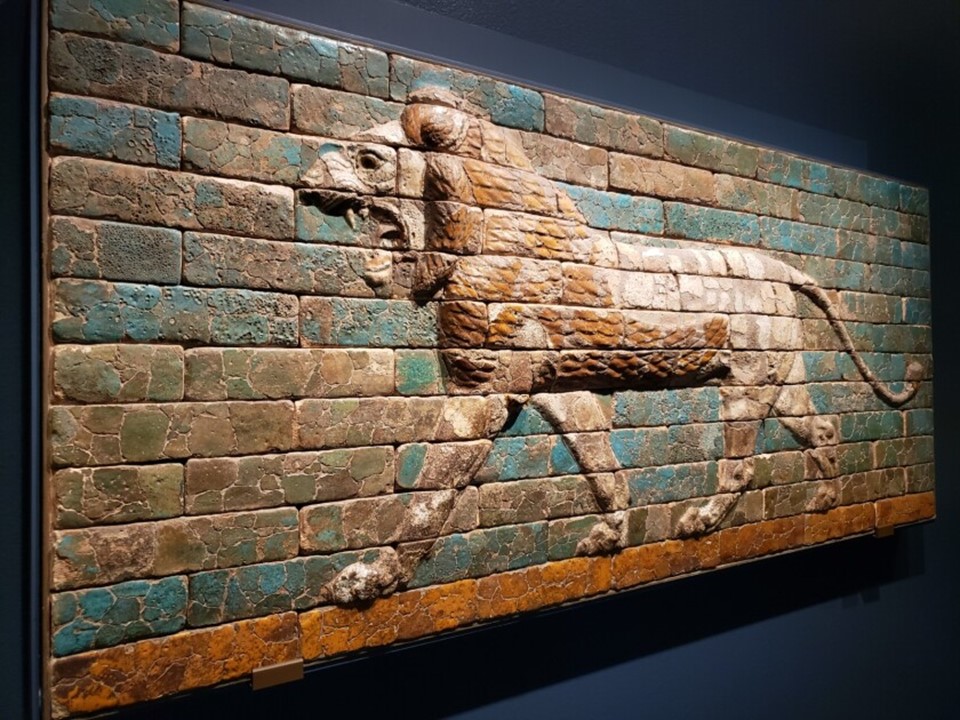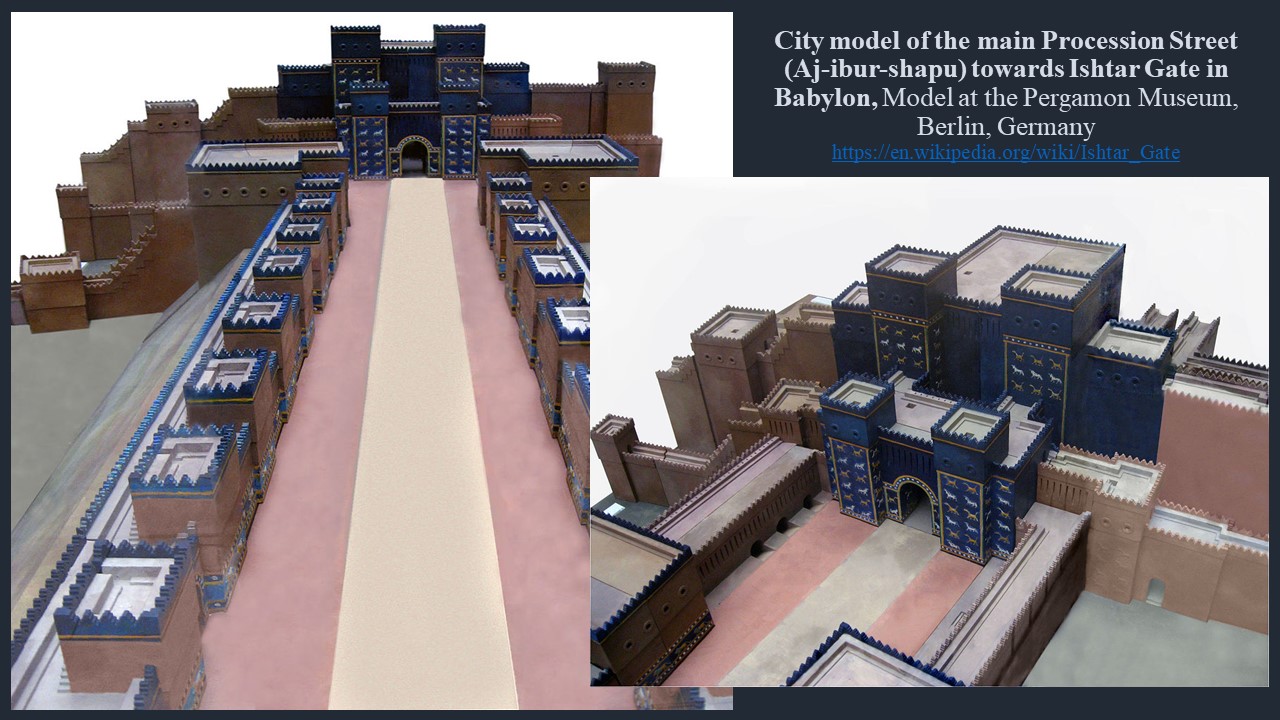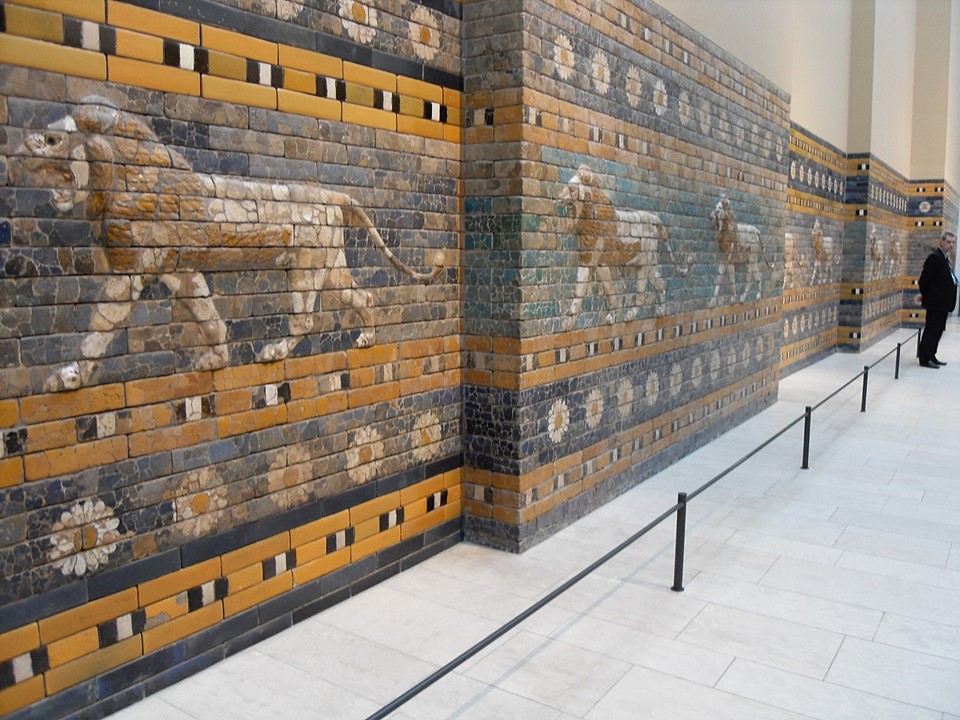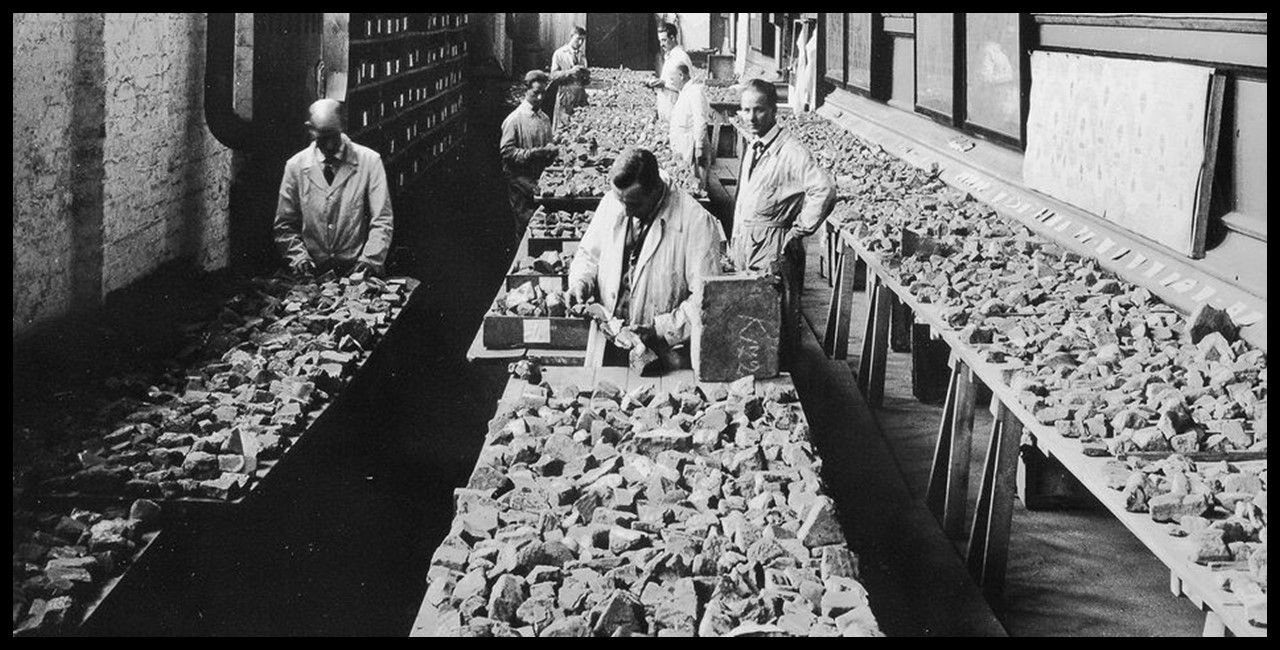
https://www.latimes.com/entertainment-arts/story/2021-04-21/getty-villa-mesopotamia-louvre
The Inscription of the Ishtar Gate reads… Nebuchadnezzar, King of Babylon, the faithful prince appointed by the will of Marduk, the highest of princely princes, beloved of Nabu, of prudent counsel, who has learned to embrace wisdom, who fathomed their divine being and reveres their majesty, the untiring governor, who always takes to heart the care of the cult of Esagila and Ezida and is constantly concerned with the well-being of Babylon and Borsippa, the wise, the humble, the caretaker of Esagila and Ezida, the firstborn son of Nabopolassar, the King of Babylon. Both gate entrances of Imgur-Ellil and Nemetti-Ellil —following the filling of the street from Babylon—had become increasingly lower. Therefore, I pulled down these gates and laid their foundations at the water-table with asphalt and bricks and had them made of bricks with blue stone on which wonderful bulls and dragons were depicted. I covered their roofs by laying majestic cedars length-wise over them. I hung doors of cedar adorned with bronze at all the gate openings. I placed wild bulls and ferocious dragons in the gateways and thus adorned them with luxurious splendor so that people might gaze on them in wonder. The Babylonian Panel with a Striding Lion exhibited in the MET, in New York City… was part of Babylon’s amazing Processional Way that connected the Ishtar Gate to the Temple of Bit Akitu, or “House of the New Year’s Festival.” http://www.kchanson.com/ANCDOCS/meso/ishtarins.html and https://www.metmuseum.org/art/collection/search/322585

The Ishtar Gate and the Processional Way in ancient Babylon may not be among the Seven Wonders of the Ancient World, but they were spectacular to view and memorable to walk by them. They were both commissioned by the longest-reigning king of the Neo-Babylonian Empire, Nebuchadnezzar II, who ruled for forty-three years, from August 605 BC to October 561 BC. The Procession Way, ran through the Ishtar Gate, connecting the inner city with the Temple of Bit Akitu, or House of the New Year’s Festival.
The Ishtar Gate walls were constructed with coloured glazed bricks, decorated with figures of Bulls and Dragons, symbols of the weather god Adad and of Marduk. The walls flanking the Processional Way were lined with figures of Striding Lions made of coloured glazed bricks as well. The depicted lions, the animal associated with Ishtar, goddess of love and war, served to protect the street; their repeated design served as a guide for the ritual processions from the city to the temple. Archaeologists believe there were friezes of flowers and sixty fierce-looking Babylonian lions on either side of the Procession Way. Glazed bricks of blue, turquoise, and golden-ochre colours, created a “magical” effect of grandeur and splendor, suitable for a city enveloped in the lore of majesty and luxury! https://www.metmuseum.org/art/collection/search/322585

The Babylon Processional Way is a marvelous achievement of the reign of Nebuchadnezzar II. Monumental in size, vibrantly colourful, and highly ornate, the Processional Way was meant to dazzle the passer-by, citizen of the city of Babylon, or traveler from afar. The entire structure served as a monument rather than having practical uses, and the religious devotion is clear cut in the representation of the gods in their animal form. https://history2701.fandom.com/wiki/Processional_Way

Excavations in Babylon started in 1899 by the German archaeologist Robert Koldewey of the Deutsche Orient-Gesellschaft (German Oriental Society) and continued to 1917. From the very beginning the objective of the excavations included not only scientific research but also the acquisition of exhibits for the Berlin museums. Shipments of excavated Babylonian glazed bricks were used to create a life-size construction of the Ishtar Gate, and the Processional Way, widely regarded as one of the most spectacular reconstructions in the history of archaeology. The reconstruction was completed in 1930 for the Pergamon Museum, on MuseumInsel in Berlin. A number of pieces from the Processional Way were sold to other museums, and these can be seen in 11 museums, the MET Museum in New York is one of them, around the world. https://archaeology-travel.com/photo-album/ishtar-gate-in-the-pergamon-museum/ and https://www.smb.museum/en/exhibitions/detail/from-fragment-to-monument/
For a Student Activity on the Babylonian Striding Lion, please… Check HERE!
An Educational Video, by Khan Academy… Reconstruction of the Ishtar Gate and Processional Way, Pergamon Museum, Berlin, Germany, created by Beth Harris and Steven Zucker… https://www.khanacademy.org/humanities/ancient-art-civilizations/ancient-near-east1/babylonian/v/ishtar-gate-and-processional-way-reconstruction-babylon-c-575-b-c-e
A Google Arts & Culture short Video (2:23min) of the Ishtar Gate and the Procession Way in 3D reconstruction… https://www.youtube.com/watch?v=ew88Z1h6jzg
For a YouTube Clip on Alexander’s grand entry into Babylon from Oliver Stone’s 2004 movie, Alexander (1.46min)… https://www.youtube.com/watch?v=zRK_X5NbIXs